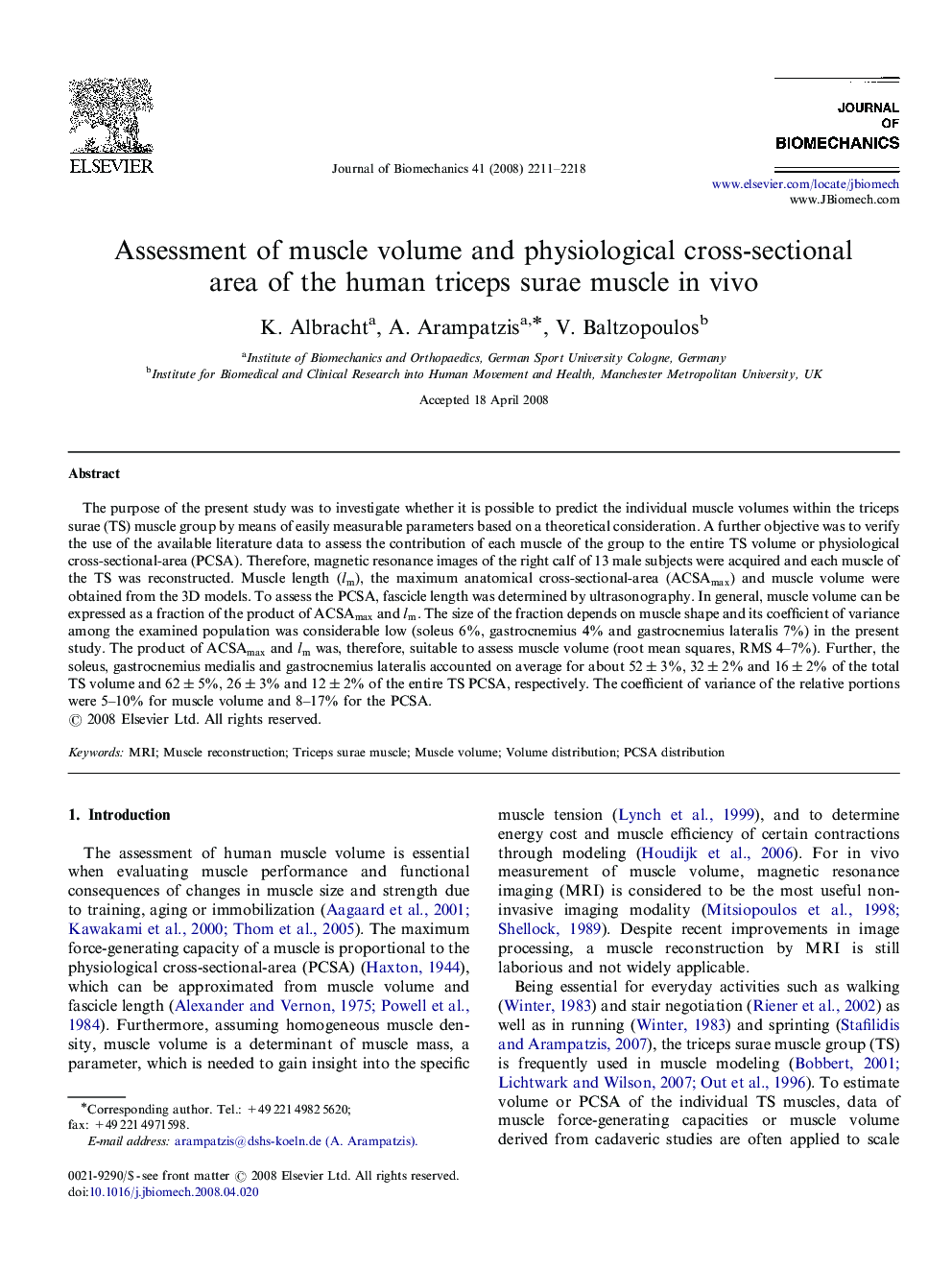| Article ID | Journal | Published Year | Pages | File Type |
|---|---|---|---|---|
| 873934 | Journal of Biomechanics | 2008 | 8 Pages |
The purpose of the present study was to investigate whether it is possible to predict the individual muscle volumes within the triceps surae (TS) muscle group by means of easily measurable parameters based on a theoretical consideration. A further objective was to verify the use of the available literature data to assess the contribution of each muscle of the group to the entire TS volume or physiological cross-sectional-area (PCSA). Therefore, magnetic resonance images of the right calf of 13 male subjects were acquired and each muscle of the TS was reconstructed. Muscle length (lmlm), the maximum anatomical cross-sectional-area (ACSAmaxACSAmax) and muscle volume were obtained from the 3D models. To assess the PCSA, fascicle length was determined by ultrasonography. In general, muscle volume can be expressed as a fraction of the product of ACSAmaxACSAmax and lmlm. The size of the fraction depends on muscle shape and its coefficient of variance among the examined population was considerable low (soleus 6%, gastrocnemius 4% and gastrocnemius lateralis 7%) in the present study. The product of ACSAmaxACSAmax and lmlm was, therefore, suitable to assess muscle volume (root mean squares, RMS 4–7%). Further, the soleus, gastrocnemius medialis and gastrocnemius lateralis accounted on average for about 52±3%52±3%, 32±2%32±2% and 16±2%16±2% of the total TS volume and 62±5%62±5%, 26±3%26±3% and 12±2%12±2% of the entire TS PCSA, respectively. The coefficient of variance of the relative portions were 5–10% for muscle volume and 8–17% for the PCSA.
